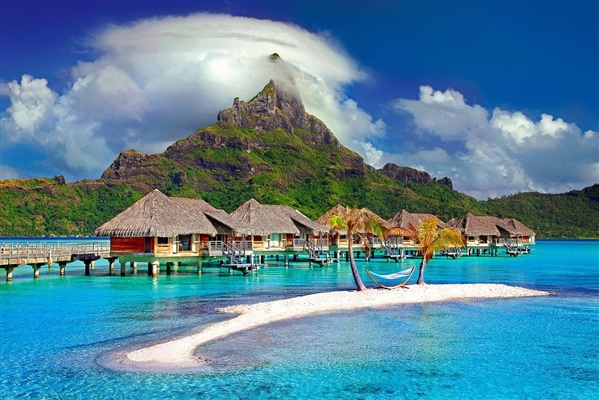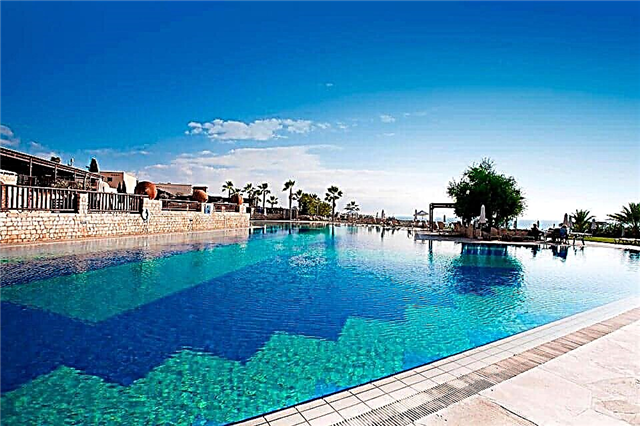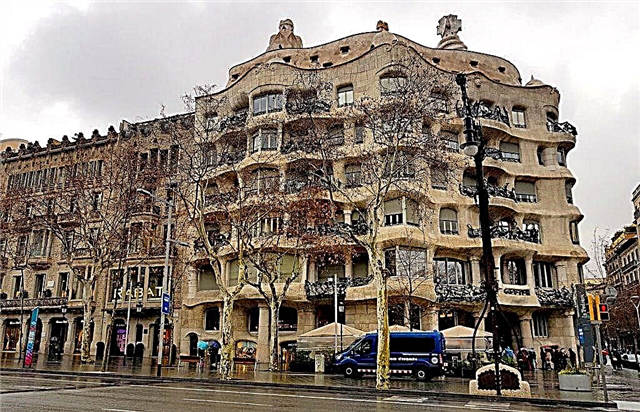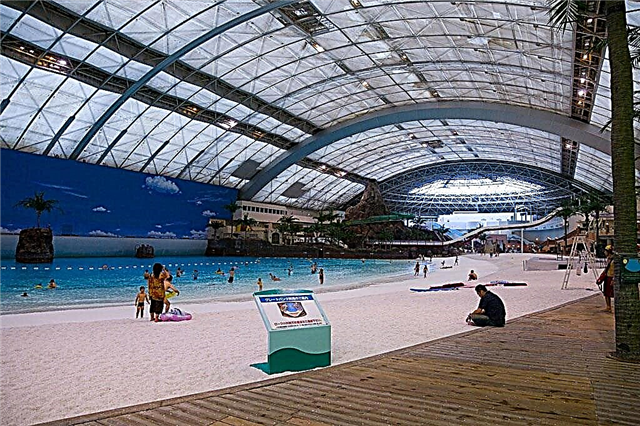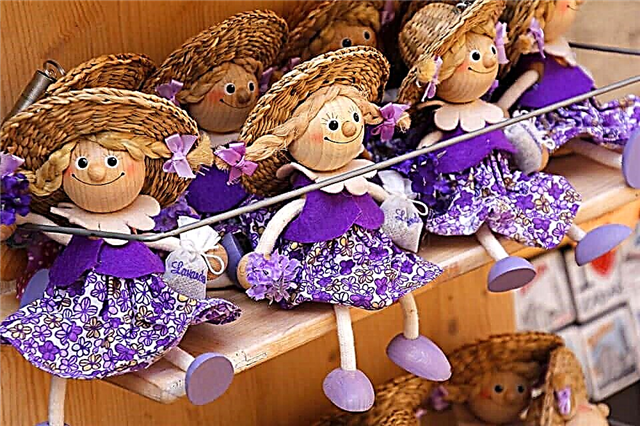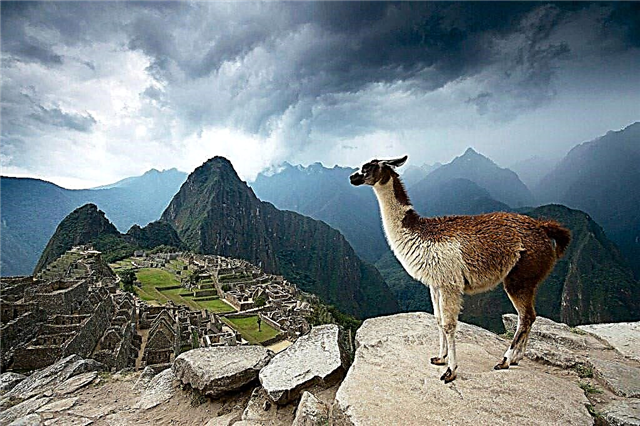Who has not heard of the Inca civilization, which several centuries ago inhabited the vast territory of the South American continent, which now belongs to Peru? Surely there are no such people among us. The greatest of civilizations was able to convey to the modern generation many secrets and mysteries that excite the mind and do not allow hundreds of archaeologists and historians from all over the world to sleep peacefully at night.
Read how and where to buy cheap flights in our life hack.

Today we have to go to one of the most mysterious and intriguing places on the planet - the Inca city of Machu Picchu, which, due to its unusual location, has earned the title of “lost place” of the most ancient civilization. Machu Picchu is included in the list of sites of the greatest cultural and historical heritage of UNESCO. As the archaeologists managed to establish, this city-settlement is the only place of the Incas, to which the colonialists from Spain did not manage to reach. Therefore, the settlement even today appears before numerous pilgrims and tourists in almost its original form.
Mysterious city in the Andes
The name Machu Picchu is literally translated from the local dialect as "Old Mountain". It is believed that the city was built by the Incas back in the 15th century. The place itself was not chosen by chance. The Incas were famous for their desire to be closer to the gods they worshiped. This is one of the bloodthirsty tribes that have ever inhabited the vastness of our planet. Their religious rites, the obligatory attribute of which was sacrifice, were aimed at appeasing their pagan gods. The Incas believed that it was through sacrifices that one could receive blessings from the gods for numerous wars, as well as cause rain or stop an epidemic.

That is why here, like a magnet, attracts all fans of fantastic stories, ancient traditions and legends. And just tourists here will always have something to replenish their family photo album or get answers to many questions that are born in their inquisitive minds.
The city is located about a hundred kilometers from the main city of the ancient civilization - Cuzco. For the first time, information about the settlement appeared only in 1911, when one of the representatives of the American School of Archeology Hiram Bingham was able to gain the confidence of local residents, and they revealed to him the secret of the ancient settlement. As it turned out, the local natives had long had information about the location of Machu Picchu, but kept the information secret, treating strangers with a warning.

Historical reference
The history of the discovery of an ancient Inca settlement is quite interesting. The scientist mentioned above went to Peru in order to complete the search for the legendary city of Vilcabambu. If you believe the legend, it was this city that became the new home for the untold riches of civilization, whose representatives fled from the conquerors from the Old World. In addition to treasures, the mummies of the rulers of several generations, as well as other items, which, undoubtedly, were of historical and archaeological value, were allegedly taken here.

Hiram Bingham was wandering hopelessly through the mountains here when he met a boy carrying an unusual jug. He then showed the scientist the way to the ancient Machu Picchu. From that moment on, this place became not only the most desirable for archaeological excavations, but also one of the most famous tourist centers in South America. Indeed, who would deny himself the pleasure of visiting one of the New Wonders of the World, to which the city was assigned in 2007.
There are many legends, stories and interesting facts about Machu Picchu, which arouse genuine interest not only among history buffs, but also among millions of tourists. In particular, it is believed that initially this place was the property of the Supreme Ruler of the Incas Pachacuteca (according to other information, the settlement was a winter residence of the ruler), that after the death of the priest it was transformed into the main center of Inca education. It was here that the most noble representatives of civilization - the inhabitants of the capital - sent their children.

There was also a division of education. So, boys were trained in astronomy, and girls were sent to apprentices in the textile industry. It was astronomy that was given paramount importance by the Incas, who were convinced that the gods gave them a lot of clues by the location of the stars and other celestial bodies. It was in heaven that the priests found answers to their questions and divined omens. But there is another version of the city's purpose. Some archaeologists argue that the construction of Machu Picchu high in the mountains was for defensive reasons, and also allowed to establish control over territories where tropical fruits grew.

Sudden disappearance
Well, where without secrets! Existed for a little more than a century, the city suddenly became empty. Voices were no longer heard in houses and on the streets, and the altar for sacrifices was empty for the first time in many years. What happened to the Incas who inhabited Machu Picchu remains one of the main mysteries of our time. They just disappeared. Some scientists associate this with the banal seizure and plundering of the capital of Cuzco, from which provisions came to the city. The Incas were forced to leave their homes in search of provisions and a new place to settle.

There are other versions as well. So, supporters of the legend about the mythical city of Vilcabambu suggest that representatives of the lower classes went to fight the colonialists, and the nobility went to the mentioned city with treasures and artifacts. There are even supporters of fantastic theories that link the disappearance of the Incas with otherworldly forces or even UFOs. Be that as it may, the city disappeared from the face of the earth for 400 years, as if waiting for the return of its real owners. Years passed, but the houses, as before, were empty, and only new cracks appeared in the huge walls of the palace and temple. Although who knows, perhaps among the locals there are descendants of ancient builders or even representatives of the nobility who once lived in Machu Picchu ...

All this is incredibly interesting and worth visiting this marvelous place, which impresses not only with its unique architecture, but also with its local landscapes. Imagine the ancient ruins of Machu Picchu, which here and there are overgrown with lush greenery, in the middle of the huge ledges of the Andes mountain range. And all this is hidden behind a dense curtain of blue fog that almost never recedes from the walls of Machu Picchu. Something, but vivid impressions and indescribable emotions are provided to every visitor.
Features of the architecture
In general, the city-sanctuary cannot boast of impressive size. There are no more than 200 structures of various purposes and sizes here. Most of them are temples and premises for public needs. Already in those distant times, the Incas learned to process stone with the help of the most primitive devices, cutting out perfectly even slabs. The walls of each building amaze with their perfectly flat surface. Even modern researchers find it difficult to explain how the Incas managed to obtain slabs with such a perfectly flat surface that they were used to build a palace and a temple.
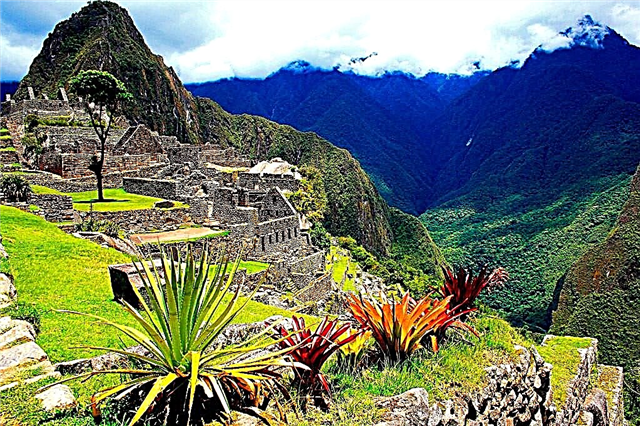
Despite the fact that the city was abandoned, and no man had set foot on its streets for more than 400 years, it is perfectly preserved. Each building, sanctuary, or palace provides an unambiguous conclusion about the main occupations of the Incas. The main pagan deity, the sun god Inti, was especially revered within these walls.
In general, Machu Picchu has a peculiar layout. Palaces and buildings for the nobility are located in the southeast. These structures stand out from the rest for their special stone masonry and luxurious decoration.The Incas also actively used the voids in the mountains. The walls of the caves were carefully processed, and the voids themselves had different social significance (in some of them, as if in a refrigerator, food was stored). It is interesting that the specificity of laying stone slabs exactly copies the architecture of Aladzha-Huyuk in Turkey. Whether this is an accident or a general technology - one can only guess, there is no reasonable explanation for this phenomenon.

The temple, near which the altar for sacrifices is located, is located in the western part of the ancient city. And opposite it is a block with dense residential buildings. Here you can also find unusual two-storey buildings, which, for sure, belonged to the middle strata of the population.
Well, the most impressive in terms of architecture are the semicircular tower and the adjacent building, which are located in the southeastern part of the city. The special techniques that were used in the construction and the unusual shape indicate that master artists worked on the project. But these were clearly not the builders who were engaged in the construction of residential buildings and the palace. The tower almost exactly repeats the architecture of the tower of the Temple of the Sun, which is located in the capital of the Incas. It is believed that the building was intended for religious ceremonies and for the defense of the city.

The tower has numbered features. In particular, its walls were erected around the rock, which remained in its original form, and under it there is a grotto. Initially, it was believed that it was here that the mummies of the rulers of civilization were kept, but later scientists came to the conclusion about the religious purpose of the underground room.
Sacred square
It is she who is considered the religious center of Machu Picchu. In its northern part there is a building of three walls, which are made of huge slabs of white marble. In the eastern part of the Sacred Square, there is the "Temple of the Three Windows", which have the shape of a trapezoid and face the east.
There is a polygonal stone on the rock in the square. It is believed that it was a kind of observatory of the Sun, according to which the ancient priests independently determined the dates for sowing and harvesting.
Master Architects
In general, in the city and beyond, there are many reminders of how skillful the local builders were. For example, the road that connected Machu Picchu with the capital of Cuzco. It is still able to amaze with its scale and beautiful architectural performance. Basically, the roads that connected different cities and settlements of the ancient civilization are made in the form of steps. Special attention was paid to drainage and foundation preparation. That is why the roads were not washed away even during the rainy seasons.

Vaina Picchu
If you go on a visit to the ancient city, be sure to find the opportunity to visit Vaina Picchu. This is the name of the mountain that is located just outside the city. The path to the top is quite difficult and will require excellent physical fitness from you. But the breathtaking views from the mountain will be a worthy reward for such a difficult ascent. Here you can see a few more Inca buildings, as well as take great photos. To get to the mountain, you will have to purchase a ticket, which costs about $ 10.
How to get there
If you like to travel light and prefer to save as much as possible while traveling, you should opt for public transport. Having reached Cusco, you need to buy a bus ticket to Urubamba, and then change to transport to Oyantaytambo. After that, all that remains is to catch the evening train to Aguas Calientes. This is the closest point to Machu Picchu. This way will take at least 5-7 hours. One way travel costs approximately $ 30.

If you have the opportunity and desire to save time, buy a ticket for a direct train from Cusco to Aguas Calientes, which will reduce travel time to a couple of hours, but the cost of such pleasure will be about $ 100.
Well, for extreme lovers and gourmets, we recommend going along the Inca Trail on foot. The route will take about 4 days, so you will need average physical training, a set of tourists and provisions. Well, for those who are in these places for the first time, experienced guides will help to avoid troubles and not get lost.
Finally, a tip: no more than 2500 tourists are allowed into the city every day, so book tickets and think over the excursion program in advance. Good luck in Peru and great experiences!



